#��強法
Explore tagged Tumblr posts
Text
改まった形|Polite Forms
In formal settings like in a business meeting or at a public gathering some words are switched with politer forms. You often hear them when somebody is giving a speech, holding a presentation or on TV. But they appear in written form as well, especially in business context. Basically, everywhere where keigo is used, it is also expected to apply politer forms.
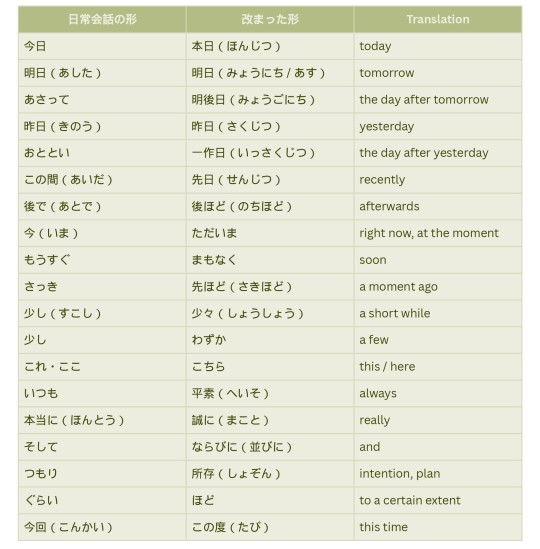
#文法#敬語#japanese langblr#langblr#studyblr#study movitation#learning japanese#japanese vocabulary#japan#japanese#study blog#study notes#language blog#keigo#japanese studyblr#japanese grammar#japanese language#日本語#日本語の勉強#nihongo
382 notes
·
View notes
Text



【Works】 『やる気ゼロからでも成績が必ずアップする 一生の武器になる勉強法』 著:葉一 先生
新装版の装画を担当いたしました。 隣で真剣に語りかけてくれているような文体が温かく、様々な勉強法の選択肢が提示されている一冊です。
https://www.kadokawa.co.jp/product/322405000581/
カバーデザイン:西垂水敦(krran) 本文デザイン:OKIKATA 本文イラスト:りゃんよ 出版:KADOKAWA ※敬称略
38 notes
·
View notes
Text
Japanese JLPT N3 Study Post #3
Welcome to my third study post, everyone! Today, I'll be making notes on the grammar point 合う to mean "Do something together." So, let's get into it!

Grammar Point 合う/あう (au)
Meaning: "Do something together."
How to use it
Verb ます stem + 合う/あう
For those wondering what "Verb Stem" means, essentially, it's the conjugation of a verb into ます form, where you then remove ます。I'll make this clear, when I write out the examples. I will strike through ます where I remove it, to assist others with understanding how "Verb Stems" in Japanese work.
Examples
私達はその件について話します合いましょう。
私達はその件について話し合いましょう。
Let's discuss together regarding that matter.

2人は愛します合っている。
2人は愛し合っている。
Those two are in love with each other.

その2人はいつも競いま��合っている。
その2人はいつも競い合っている。
Those 2 are always competing with each other.

合うvs会う
Now, this isn't explicitly related to this grammar point, but I know this is something I always used to have confusion over, so I thought I'd include a point on it. These two words are both spelt and pronounced the same way, but their meaning is different. I'll explain this down below.
会う (au)
Commonly used to mean "to meet" or "to see someone."
This word uses the kanji 会, which conveys the idea of "coming together."
It means to physically meet someone/a group of people.
Example
友達に会う。
To meet a friend.

合う (au)
合う means "to match", "to fit", or "to go well together".
This word uses the kanji 合, which conveys the idea of harmony or agreement.
合う is used when talking about things that are compatible, or people who get along well together.
Example
この靴は私の服に合う。
These shoes match my clothes.
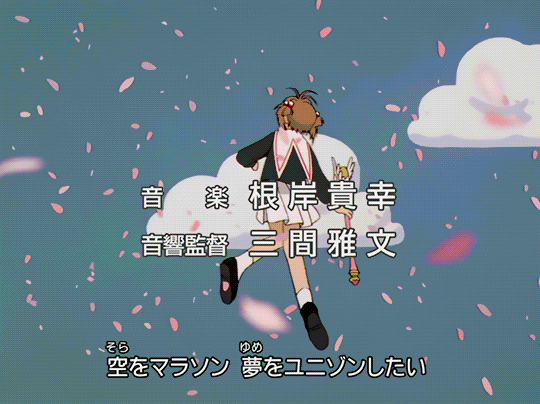
彼と彼女は気が合う。
They get along well together.

I hope this helps clarify the difference between the two!
Twisted Wonderland Notes
Unfortunately, I haven't got much done on the translation of Volume 1 of the Light Novel. I ended up being far busier over the weekend than I had anticipated. I'm hoping to get started on it this week, so if you're looking forward to that, stay tuned!

References
I am unable to embed this link, but hopefully you can just copy and paste it, if you want to read more on 会うvs合う。
Previous Posts
If you want to take a look at my previous grammar posts, here they are!
Conclusion
Thank you for reading, and I hope this was helpful! As always, feel free to write any suggestions down in the comments, or any other grammar points you would like me to break down!
#japanese#japanese language#language stuff#language learning#japanese learning#study notes#language#日本語#日本語の勉強#日本語文法#twisted wonderland#my translations
22 notes
·
View notes
Text
When love becomes a diagonal, it may intersect at one point but can never extend into a line.
一旦愛如斜角,雖然交會於一點,但卻無法延續成一條線。
youtube
#斜角#LoveAtAnAngle#情歌#SongOfLove#IntersectingFates#Diagonal Angle#silent gap#不同的角度#無法平行#倔強#不對稱的符號#命運的語言#孤單的光#找不到方向#一道光#Angolo Diagonale#youtube#spotify#spotify playlist#love#music#ai music#ai world#audiomack#apple music#itune#Youtube
9 notes
·
View notes
Photo

#Yロシク#アニメ-カフェテリア#ランダムボックス#金装のヴェルメイユ ~崖っぷち魔術師は最強の厄災と魔法世界を突き進む~#Kinsou no Vermeil: Gakeppuchi Majutsushi wa Saikyou no Yakusai to Mahou Sekai wo Tsukisusumu
50 notes
·
View notes
Text
寫字潛能開發系列課程:硬筆隸書班(林冠傑,2020)

#美隸新世界 #歷史回顧 #硬筆隸書
寫字潛能開發系列課程:隸書班(林冠傑,2020)
板書示範 #曹全碑 #硬筆隸書教學 #硬筆隸書課程
■ 社群介紹
本課程榮獲「國立東華大學教學卓越中心」計畫補助。主要學習任務為硬筆書法潛能開發系列課程(隸書班),參與對象以大專生、碩博士生及部分校友(高等教育)為主,課程處於教學實踐研究的開發階段。書法藝術與潛能開發社群, 106 至 113 學年間,6 度獲頒「執行優良社群」獎。
■ 課程簡介
本片是 108-2 學期之第一堂次,本堂次講授內容主要為隸書之「用筆方法」包含常見筆形(平��、波橫、豎畫、彎畫、捺畫、折畫等),以及常見之部首示例(水、火、木、禾等)。
■ 前言
由於隸書並無所謂的「標準隸書」,較少老師能針對隸書進行系統性的授課。其中,教授隸書課程的老師多數會選擇由臨帖入門,這些選帖可能是張遷碑、乙瑛碑、禮器碑、史晨碑或曹全碑等名帖,學生能較完整學習某種隸書的風格,但是不利於脫帖自運。
又因為隸書的實用性在當代而言,較不富實用性,被視為藝術性較高的書體,以及前述所及的正確性較難受到各界肯認,畢竟隸書分為草創期、發展期和成熟期,歷代有不同的見解與創變。但是多數能認同八分書至漢隸已趨成熟,而其奠定後世發展草書、楷書和行書的文字結構基礎。
硬筆隸書相對毛筆隸書的課程,更是可謂稀缺。
■ 硬筆隸書課程講義
還有部分庫存,真心需要的可以詢問。
#歷隸在目 #有夠隸害 #自隸自強 #隸拔山河 #嘔心隸寫 #鋼筆 #硬筆 #粉筆 #板書 #粉筆字 #硬筆書法
2 notes
·
View notes
Text
2 notes
·
View notes
Text
みんなさん、久しぶりです!
お元気ですか?日本語の勉強はどうですか?
じゃ、英語で続けます。👇
ごめんなさい (´°̥̥̥̥̥̥̥̥ω°̥̥̥̥̥̥̥̥`)
〜
My Japanese studies have been on hold for several months - 5 months, in fact (my last post being last August). Life has gotten busy, including graduate classes for a writing certification and dealing with depressive episodes. The past couple of months have been a struggle, but I really want to try my best this year to catch up with my studies and start Genki 2.
As for grammar progress, I'm continuing my Genki 1 review with Marugoto and Tokini Andy (where there's amazingly helpful immersion content, including short stories accompanied with audio as well as shadowing content). I'm working on compiling my notes across Word documents I originally made years ago for Genki 1 content.
As for kanji, I have put a pause on WaniKani and decided to try Tokini Andy's kanji learning method. I really struggled with the kanji reading mnemonics, especially trying to come up with some on my own when I found the WK ones lacking in memorability. I also had trouble learning readings on their own first, before learning vocabulary. Andy's method can be summed up as a hybrid between rote memorization, RTK, and WaniKani. He uses SRS, mnemonics, and writing practice to reinforce learning, and the N5 kanji series on his YouTube channel also includes interesting kanji history. I find it really appealing that his method focuses first on English meanings of kanji, using stroke order, official radicals, and mnemonics to reinforce the meaning, and then incorporating grammar and vocabulary words in the form of full sentences later on. Also, a key point is that kanji are built up sequentially, so you learn 口 first before learning 四 (even though "mouth" and "four" aren't semantically related) and then you use a story to relate them to one another (e.g. mine is Domo-kun has a person's legs dangling out of his square-shaped mouth).
I'm not technically starting from scratch with kanji, as I do know a good portion of the N5 kanji already. However, I downloaded the Anki decks for both the N5 kanji and the vocabulary on TKA (which requires a paid membership, so I will not be sharing that content here) and started the first 5 cards in each deck - for a total of 10 cards done today. I'll most likely take my own notes in a notebook so I can keep track of my progress in a more tangible way.
Lastly, as for diary entries, I feel that I put too much pressure on myself before to blog more regularly. I'll aim for one entry per week, but if I don't post, I won't beat myself up about it. I'll also try to keep the entries short to be less intimidating to start (and read).
That's it for now. またね!
11 notes
·
View notes
Text
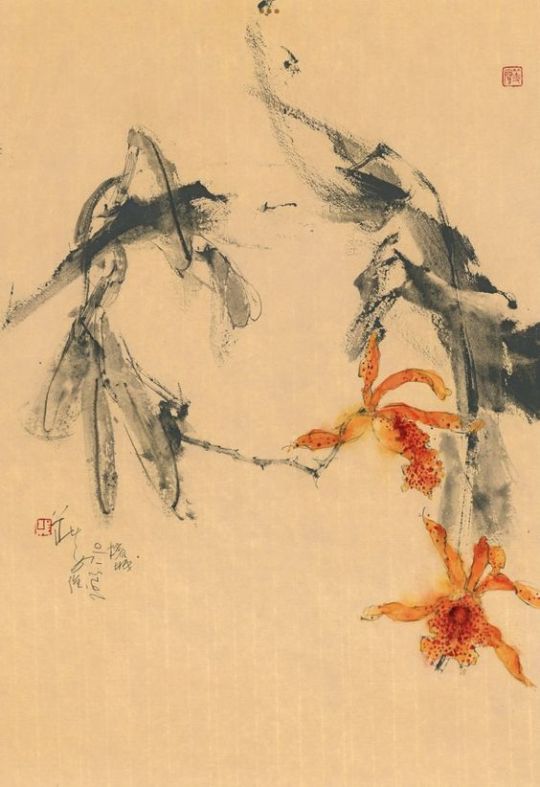
Ch'ng Kiah Kiean 莊嘉強 (Malaysian, b. 1974)
Myrmecatavola Frances Fox Orchid I, 2022. Graphite & Watercolour on pre-mounted rice paper
11 notes
·
View notes
Text
よくやる間違い~教科書は第1章から読むな!~
読者の中で、学生さんや私と同じ社会人で何らかの試験対策の勉強をしているかと思います。
「だけど、なかなか勉強が思うように進まない…!」
そんなアナタに、とても大事なことをお伝えします。
それは…
教科書やテキストの第1章からクソ真面目に読まない!ということ。
私も、FP(ファイナンシャルプランナー)として業務に携わる傍ら、FP1級という上級の資格試験に向けて勉強中です。今手元にあるテキストは450ページくらいあります(多い…)
第1章は「ライフプランニングと資金計画」という���基礎として大事な内容ではあるのですが、なまじ知っている内容も多いため飽きてくるんです。言われてみたら、皆さんも同じ経験していませんか?
ですから、勉強始めるときは目次をザっと眺めて、ちょっとでも興味を引いたところから読み始めてみたらいいんです!
ちょうど私でいうと、先日ご相談受けた方からビックリすることを聞きました。
「勤めていた会社が突然倒産して無職になったからフリーランスとして働いている」(えっ…?)
でもそのおかげで、失業中の方や個人事業主の方に関する事柄に興味がありました。
そして目次をみて、30ページくらいのところにある「雇用保険」と、190ページくらいのところにある「個人事業と青色申告」を開くわけです。
当然、アタマにもスッと内容が入ってきますし、サクサクと15ページほど進みました。
皆さん、第1章の1ページ目から読み進めて、そんなにサクサクいきますか!?
というわけで、皆さんもアタマから読まずに好きなところから読み潰してみてください。思いのほか、「あれ、結構読み終わったページ多いじゃん!」となります。
2 notes
·
View notes
Text

This post is an addition to 敬語の5分類|The 5 Types of keigo.
尊敬語の特定形
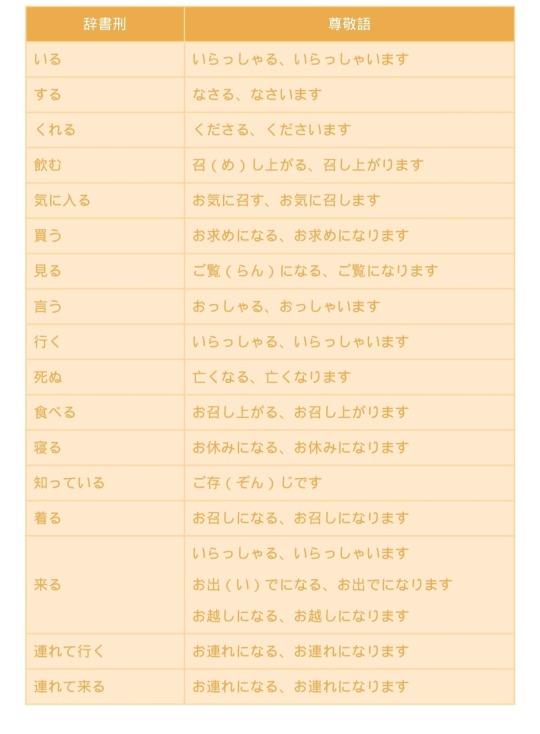
謙譲語Ⅰの特定形
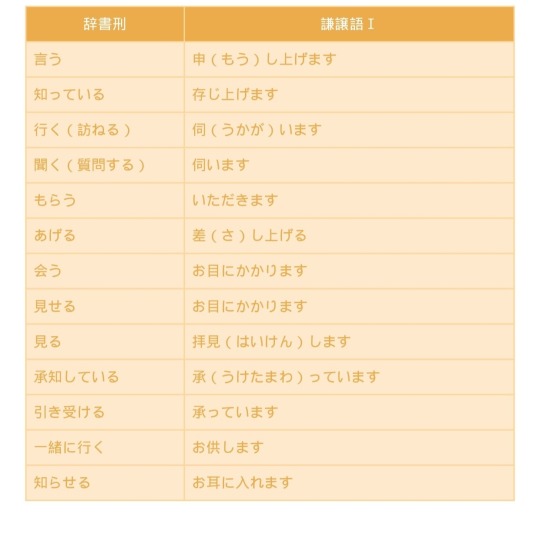
謙譲語Ⅱの特定形
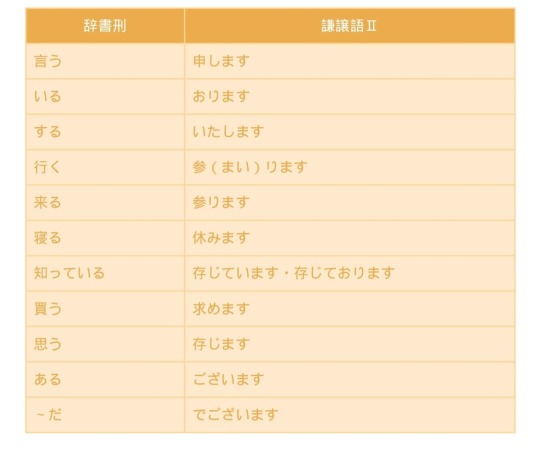
#文法#敬語#japanese langblr#learning japanese#japanese vocabulary#japanese#japanese language#keigo#study notes#japanese studyblr#japanese studyspo#japanese grammar#nihongo#日本語#日本語の勉強
103 notes
·
View notes
Text
🥁🌲(๑˘▿˘)🎸💬(ര‿ര๑ ) 🌲🎶 🎶𝕊𝕠𝕞𝕖𝕥𝕚𝕞𝕖𝕤 𝕀 𝕨𝕚𝕤𝕙 𝕀 𝕜𝕟𝕖𝕨 𝕪𝕠𝕦 𝕨𝕖𝕝𝕝🎶
Get to know someone with these 𝟭𝟭 Japanese Questions!
👩🏫We’ll help you with the answers
-📚ー
🔊𝐈 𝐖𝐚𝐧𝐭 𝐭𝐨 𝐓𝐞𝐥𝐥 𝐘𝐨𝐮 | ⑪ 𝘽𝙖𝙨𝙞𝙘 𝙅𝙖𝙥𝙖𝙣𝙚𝙨𝙚 𝙌𝙪𝙚𝙨𝙩𝙞𝙤𝙣𝙨 (𝙵𝚒𝚛𝚜𝚝 𝙼𝚎𝚎𝚝𝚒𝚗𝚐)
-💬ー
👋(๑・ω・๑)[◜▿◝]🗯️👋(๑・ω・๑) QUIZBO™ joins to pronounce useful questions for a first meetingー We even have some example answers to help you form your own sentences!
#japanese#japanese language#langblr#language#learn japanese#learnjapanese#kiki#koko#language learning#languages#japan#日本語#日本語の勉強#日本語勉強#単語#文��#語彙
4 notes
·
View notes
Text
第36回【介護福祉士試験】過去問375問から「気になる問題」を現役介護福祉士が徹底解説!一発合格へ向けての勉強法をお伝えします!<前編>
今回の【実録】介護の本質chからは、令和6年1月28日に行われる「第36回介護福祉士試験」における「一発合格」のための勉強法についてです。過去問375問を実際に解き「気になる問題」について、現役介護福祉士の筆者がポイントなどをまとめて徹底解説します。
今回は【実録】介護の本質chから 第36回【介護福祉士試験】過去問375問から「気になる問題」を 現役介護福祉士が徹底解説!一発合格へ向けての勉強法をお伝えします! と題してお送りします。 1987年より国家資格となった「介護福祉士」。 令和5年9月末までにおいての登録者数は、推定190万人にも上っています。 筆記試験の概要については 13分野、全125問に亘る問題のうち 全分野において1点でも得点があり、正答率70%以上が合格になります。 介護の仕事をする上では今後「必須」となるだけに、なんとか取得しておきたい資格であり、2024年4月からは「国家資格取得者」や「従事する上で必要な研修を修了している者」以外は介護の仕事ができなくなるので、2024年1月の試験においてはぜひとも合格を勝ち取ってもらいたい! そう筆者は切に願っています。 そこで重要となるのが「勉強…

View On WordPress
57 notes
·
View notes
Text
Japanese JLPT N3 Study Post #1
Hello friends! I don't have much expectation for anyone to really engage with these posts, but for the sake of my own study and ensuring that grammar points in particular stick with me, I will be making various blog posts about my progress. These posts will usually include grammar, kanji and new vocab. They will also start including translation progress notes for light novels (e.g. the Twisted Wonderland Light Novels) which I am particularly keen to translate. I hope these notes will be helpful for other Japanese Language learners!
To study grammar points, I am using JLPT Sensei , and going through the N3 Grammar Points one by one. I will also be cross-referencing with my textbook (when I remember where I put it, haha), and other sites, where needed. I'll include the links for these down the bottom, for anyone who would find them useful. If you have any resources, suggestions, or corrections, feel free to comment them below!

Grammar Point: あまり (amari)
"So much ... That ..."
"To the point that"
When ない form/negative form is used, it becomes:
"Not much"
"Not so much"
The positive form puts emphasis on something done to an excess with negative connotations.
This grammar point is derived from the noun/adverb 余り(あまり)which translates to "remainder", "rest" or "surplus".
余り is also the noun version of 余る. When in a verb form, 余る means "to be in excess", "to remain", "to be too much".
This grammar point will be seen both using the kanji 余り and hiragana あまり。
How to use it:
Positive Form:
Verb (dictionary form) + あまり
Verb (casual, past) + あまり
Noun + の + あまり
Adjective い (み) + の + あまり
Adjective い(さ)+ の + あまり
Adjective な + あまり
Negative Form:
あまり + Verb + ない あまり + Adjective い in ない form (where い becomes くない)
あまり + Adjective な + じゃない/ではない
あまり + Noun + じゃない/ではない 例文
Examples
あまり寒くないよ。It's not that cold.

嬉しさのあまり、彼女は涙を流しました。She was so happy that she cried.

彼は心配するあまり、倒れてしまった。He was so worried that he collapsed.

Conclusion
Thank you for reading, and I hope this was somewhat helpful for you!
References
^^For whatever reason, the link wasn't inserting properly for the page on あまり so you can find it as the second grammar point on this list. See you next time!
#japanese#language stuff#language#language learning#study notes#japanese learning#japanese language#日本語#日本語の勉強#日本語文法
24 notes
·
View notes
Text
Angolo Diagonale (M1)
Una voce magnetica può svelare un amore obliquo?
Can a magnetic voice reveal love at an angle?
磁性的聲音是否能唱出斜角的愛?
#斜角 #LoveAtAnAngle #AngoloDiagonale
youtube
#斜角#LoveAtAnAngle#情歌#SongOfLove#EmotionalBallad#AmoreInUnAngolo#youtube#itune#apple music#audiomack#music#love#spotify playlist#spotify#不同的角度#無法平行#倔強#不對稱的符號#命運的語言#孤單的光#找不到方向#一道光#DiagonalAngle#AngoloDiagonale#Youtube
8 notes
·
View notes

